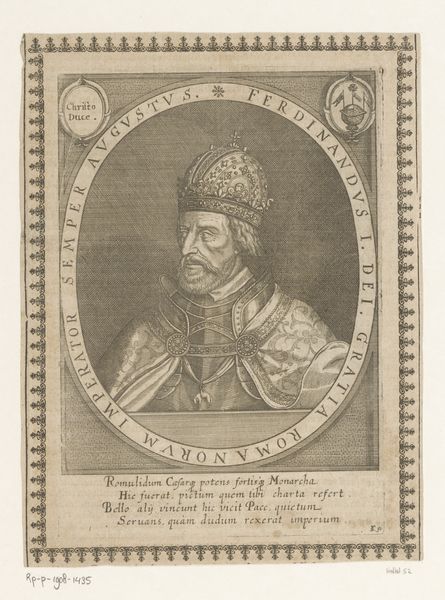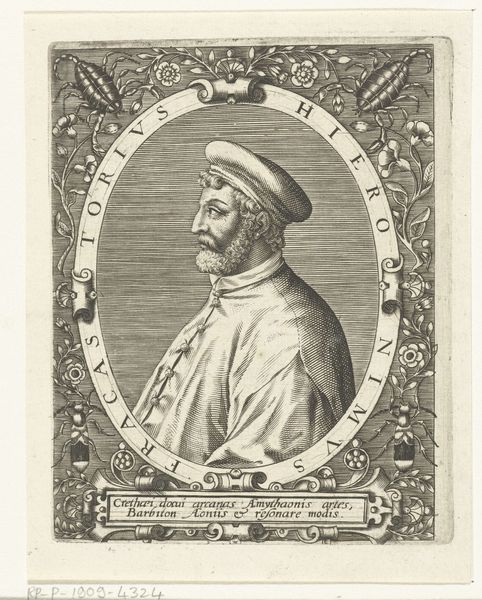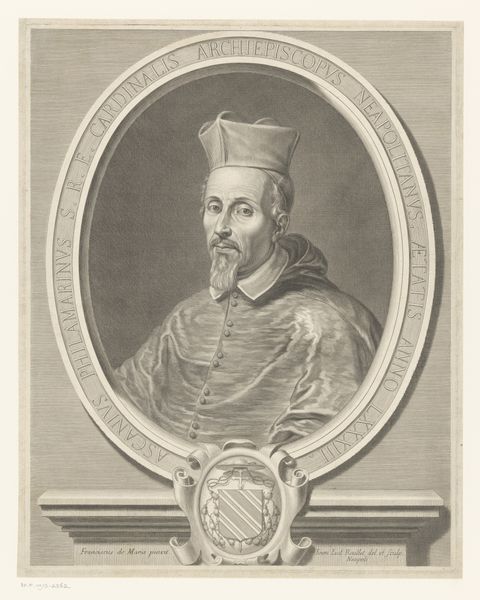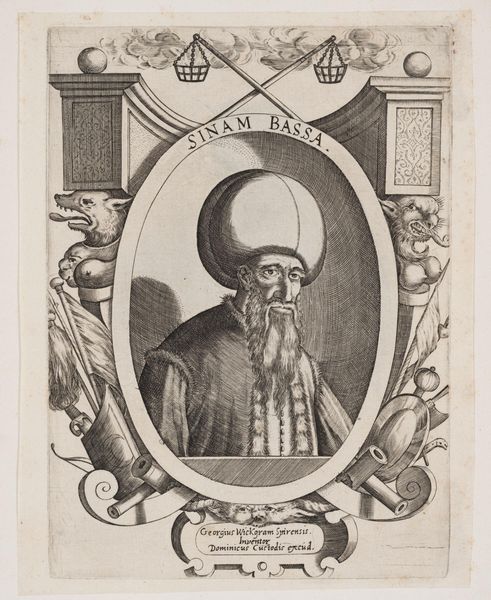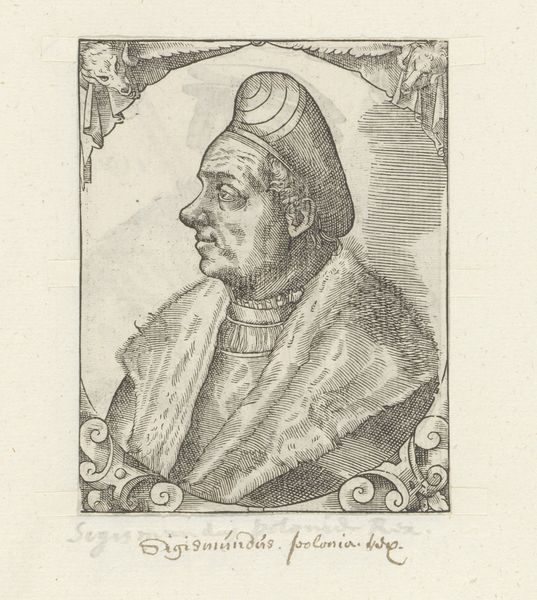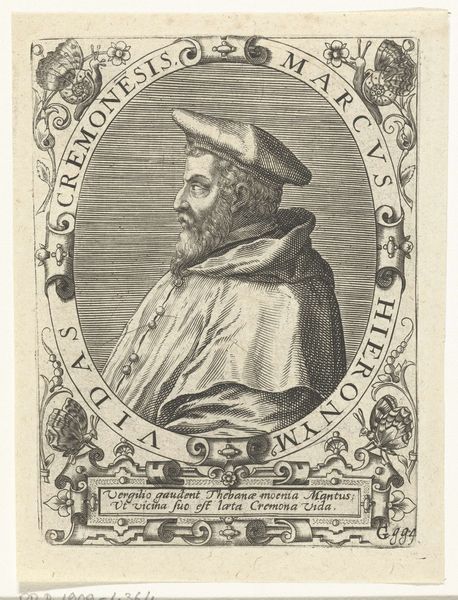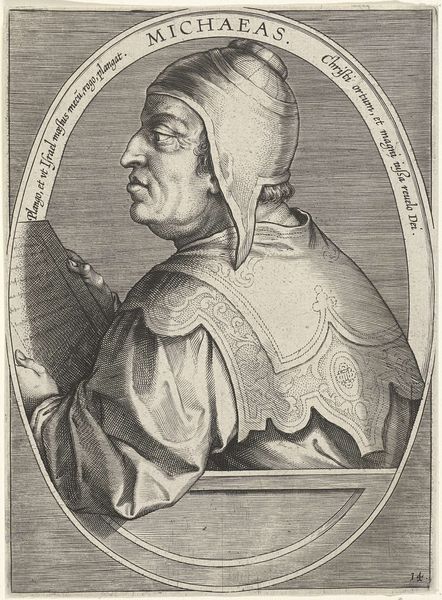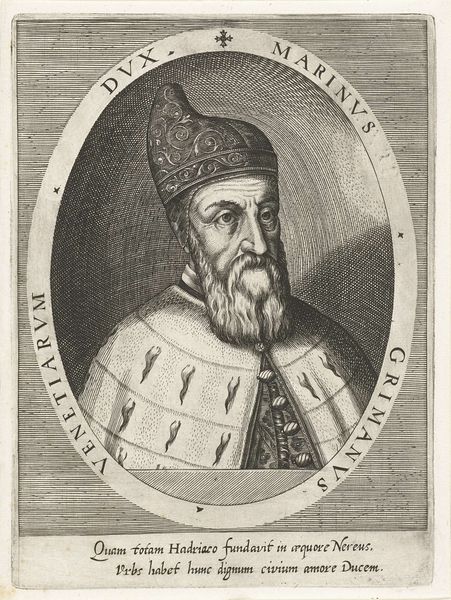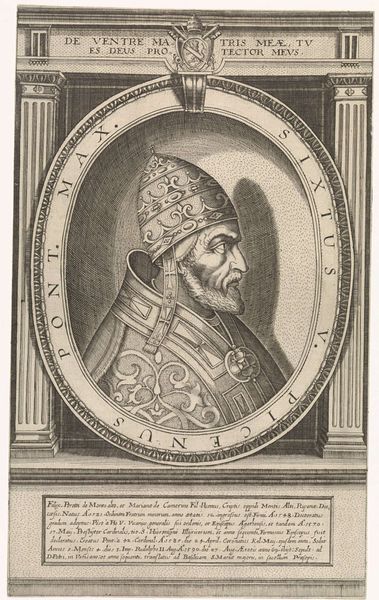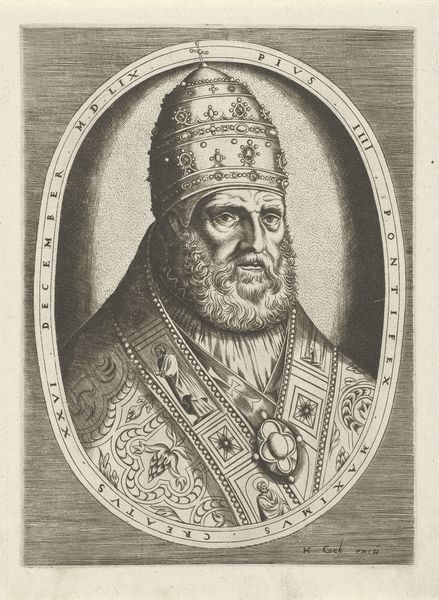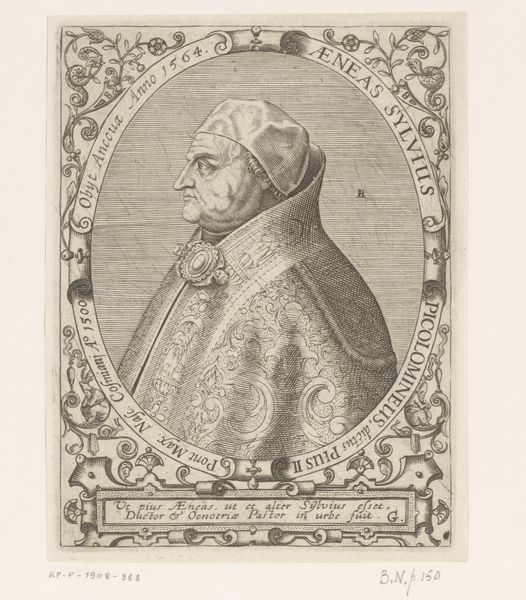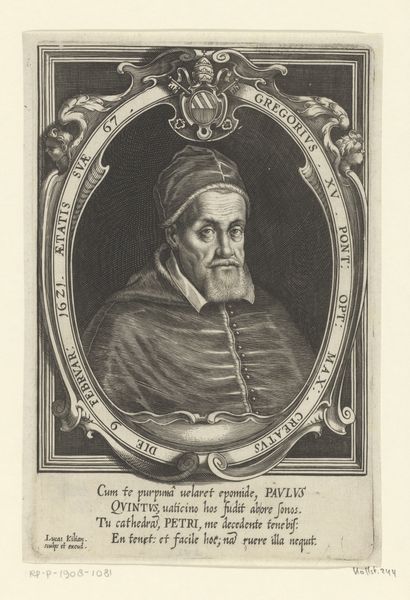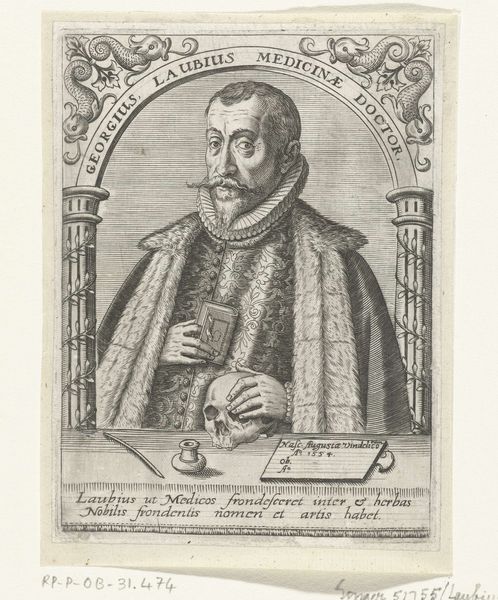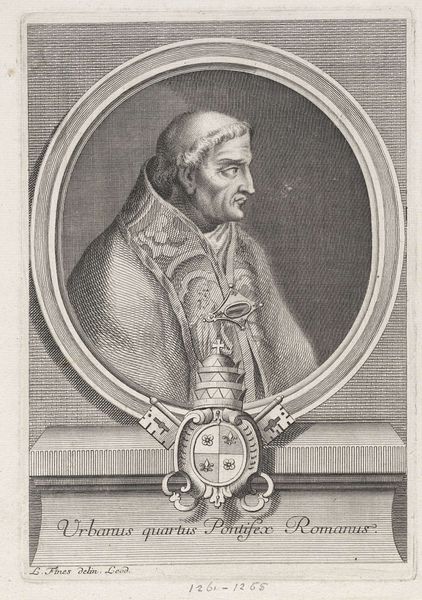
print, engraving
#
portrait
#
baroque
# print
#
old engraving style
#
caricature
#
portrait drawing
#
history-painting
#
academic-art
#
engraving
Dimensions: height 310 mm, width 196 mm
Copyright: Rijks Museum: Open Domain
This portrait of Ferdinand I of Habsburg was made by Jacob van der Heyden, likely in the early 17th century, through the process of engraving. This intaglio printmaking technique involves incising an image onto a metal plate, inking the recesses, and then pressing paper against the plate to transfer the image. Notice how the sharp lines of the engraving lend a crisp formality to Ferdinand’s likeness. The meticulous process conveys a sense of controlled precision, reflecting the power and authority of the emperor. The lines, though delicate, have a remarkable ability to capture the textures of his crown and the folds of his garments, creating a tactile experience for the viewer. Engraving in this era was not merely a reproductive process; it was a skilled craft that contributed to the dissemination of knowledge and political power. Prints like these were crucial for circulating images of rulers, thus shaping public perception and solidifying their status. It reminds us that art is always embedded in a network of labor, politics, and consumption.
Comments
No comments
Be the first to comment and join the conversation on the ultimate creative platform.
